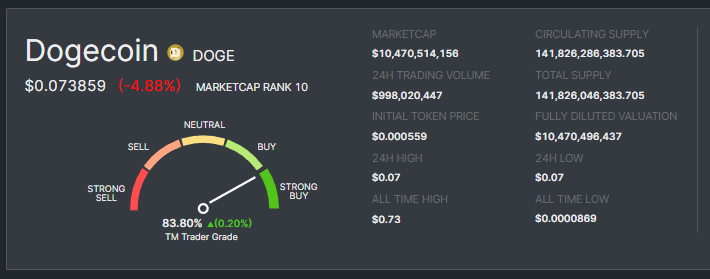Free APIs: Practical Guide for Crypto & AI Developers

Free APIs unlock data and functionality for rapid prototyping, research, and lightweight production use. Whether you’re building an AI agent, visualizing on-chain metrics, or ingesting market snapshots, understanding how to evaluate and integrate a free API is essential to building reliable systems without hidden costs.
What a "Free API" Really Means
Not all "free" APIs are created equal. The term generally refers to services that allow access to endpoints without an upfront fee, but differences appear across rate limits, data freshness, feature scope, and licensing. A clear framework for assessment is: access model, usage limits, data latency, security, and terms of service.
- Access model: API key, OAuth, or anonymous endpoints determine how you authenticate and control usage.
- Usage limits: Calls per minute/day, concurrency limits, and burst policies affect feasibility for real-time applications.
- Data latency and granularity: Historical snapshots versus streaming updates change how you design ingestion and caching.
- Licensing and redistribution: Check whether you can store, display, or redistribute data; free tiers often restrict commercial redistribution.
- Support and SLA: Free tiers rarely carry guarantees—plan for graceful degradation and rate-limit handling.
How to Evaluate Free APIs: A Practical Checklist
Use a methodical approach to compare options. Below is a pragmatic checklist that helps prioritize trade-offs between cost and capability.
- Define requirements: identify throughput, freshness, and fields required. A small set of critical fields reduces bandwidth and simplifies caching.
- Measure performance: run latency and error-rate tests from your target regions. Free endpoints can be geo-constrained.
- Examine rate limits: build sample load tests to confirm call quotas and how the provider enforces throttling.
- Check data provenance: verify how data is sourced and updated; for derived metrics, inspect calculation methods and versioning.
- Review terms: confirm allowed use cases, retention rights, and attribution requirements.
- Plan fallbacks: design multi-source strategies and caching layers to mitigate outages or caps.
For crypto-specific datasets, platforms such as Token Metrics illustrate how integrated analytics and API endpoints can complement raw data feeds by adding model-driven signals and normalized asset metadata.
Integration Patterns and Best Practices
Free APIs are most effective when integrated with resilient patterns. Below are recommended practices for teams and solo developers alike.
- Client-side throttling: implement token buckets or leaky buckets to smooth bursts and reduce 429 errors.
- Edge caching: cache responses at the CDN or application edge, with TTLs determined by acceptable staleness.
- Incremental syncs: prefer delta queries where supported to limit payload sizes and conserve rate limits.
- Graceful degradation: show cached or approximate data when the API is unavailable to preserve UX continuity.
- Monitoring & observability: track request counts, error rates, and latency; alert on policy limit warnings rather than only on failures.
- Security: never embed API keys in public repositories; use vaults or server-side proxies for authentication.
Use Cases and Scenario Analysis
Understanding where a free API fits in your architecture depends on the scenario. Consider three common patterns:
- Rapid prototyping: Free API tiers let teams validate hypotheses quickly. Favor simplicity and low setup friction here; strict rate limits are acceptable for early tests.
- Research and backtesting: Historical endpoints with bulk download capabilities are valuable. For reproducible experiments, verify dataset completeness and snapshot timestamps.
- Light production workloads: Small applications can rely on free tiers if architects combine caching, retry strategies, and multi-source redundancy to manage availability risks.
When working with AI agents or automated analytics, instrument data flows and label data quality explicitly. AI-driven research tools can accelerate dataset discovery and normalization, but you should always audit automated outputs and maintain provenance records.
Build Smarter Crypto Apps & AI Agents with Token Metrics
Token Metrics provides real-time prices, trading signals, and on-chain insights all from one powerful API. Grab a Free API Key
FAQ: Common Questions About Free APIs
What limits should I expect on a free API?
Limits vary by provider but often include reduced daily/monthly call quotas, limited concurrency, and delayed data freshness. Review the provider’s rate-limit policy and test in your deployment region.
Can I use free APIs in production?
Yes for low-volume or non-critical paths, provided you incorporate caching, retries, and fallback logic. For mission-critical systems, evaluate paid tiers for SLAs and enhanced support.
How do I secure API keys for free tiers?
Store keys in environment-specific vaults, avoid client-side exposure, and rotate keys periodically. Use proxy layers to inject keys server-side when integrating client apps.
Are free APIs reliable for historical data needs?
Some free APIs provide robust historical endpoints, but completeness and retention policies differ. Validate by sampling known events and comparing across providers before depending on the dataset.
How can AI tools help when using free APIs?
AI tools can assist with data cleaning, anomaly detection, and feature extraction, making it easier to derive insight from limited free data. Always verify model outputs and maintain traceability to source calls.
What should I monitor after integrating a free API?
Track request volume, error rates (429/5xx), latency, and data staleness metrics. Set alerts for approaching throughput caps and automate graceful fallbacks to preserve user experience.
Is it legal to store and redistribute data from a free API?
Legal permissions depend on the provider’s terms. Some allow caching for display but prohibit redistribution or commercial resale. Always consult the API’s terms of service before storing or sharing data.
How do I plan for scale from a free tier?
Design with decoupled ingestion, caching, and multi-source redundancy so you can swap to paid tiers or alternative providers without significant refactoring.
Can multiple free APIs be combined?
Yes. Combining multiple sources improves resilience and data quality, but requires normalization, reconciliation logic, and latency-aware merging rules.
Disclaimer
This article is educational and informational only. It does not constitute financial, legal, or investment advice. Evaluate services and make decisions based on your own research and compliance requirements.
Create Your Free Token Metrics Account

.png)




%201.svg)
%201.svg)


%201.svg)














.svg)




.png)